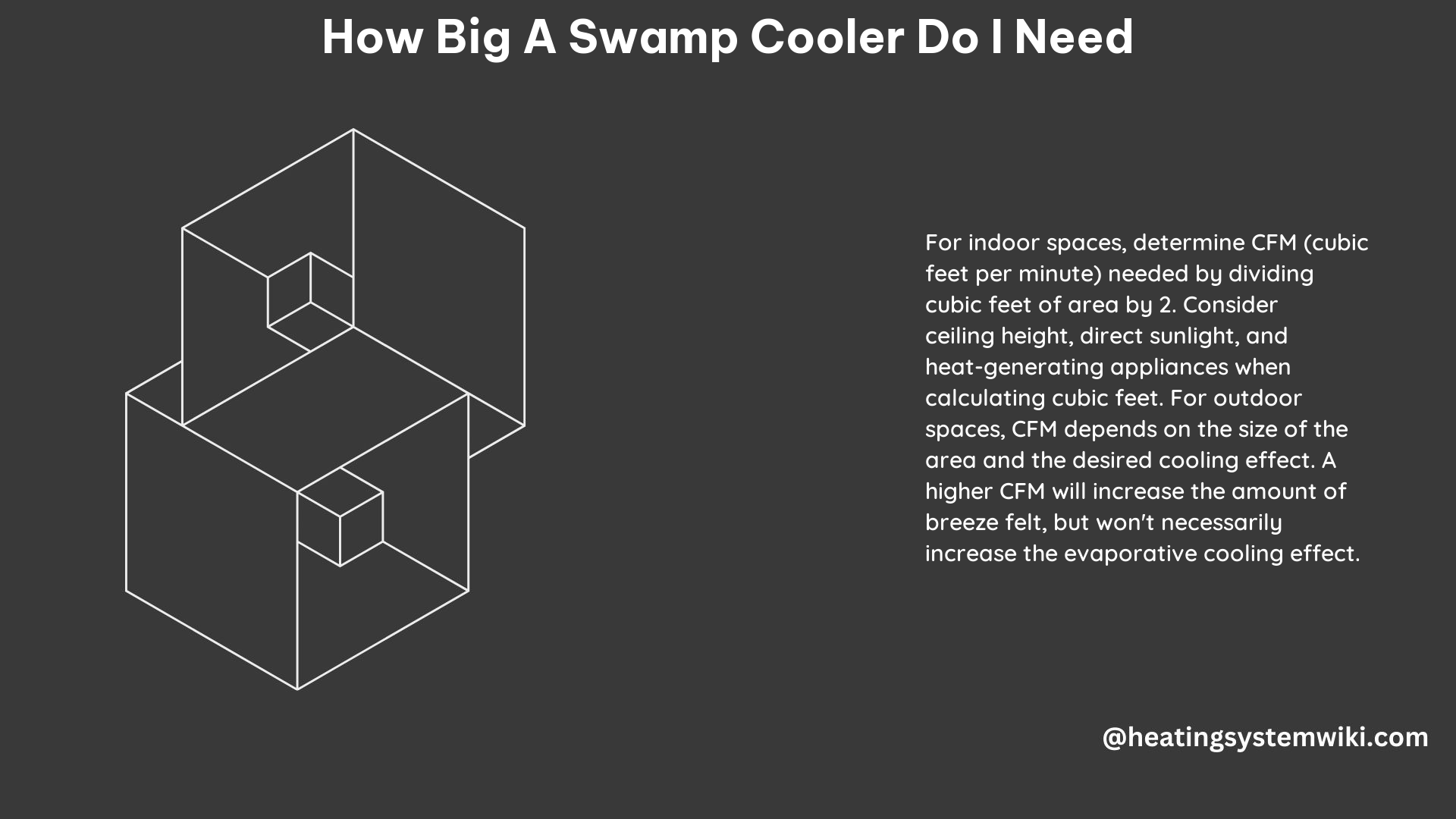When it comes to choosing the right size swamp cooler for your space, there are three key factors to consider: airflow, cooling capacity, and cabinet size. By understanding these factors and how they impact the performance of your swamp cooler, you can ensure you select the perfect unit for your needs. Let’s dive into the details.
Airflow: The Heart of Swamp Cooler Efficiency
The primary function of a swamp cooler is to move large volumes of air, and the airflow capacity is the most important factor in determining the right size. Swamp coolers are rated by their Cubic Feet per Minute (CFM) or Cubic Meters per Minute (CMM) output, which measures the amount of air the unit can circulate.
As a general rule, you’ll want to select a swamp cooler with a CFM or CMM rating that is approximately half the cubic footage of the space you’re trying to cool. For example, if you’re cooling a 1,000 cubic foot area (such as a 10′ x 10′ x 10′ tent), you’ll need a swamp cooler with at least 500 CFM. In a 27 cubic meter space (3m x 3m x 3m), you’d require a cooler with at least 13.5 CMM.
This “half the cubic footage” guideline works well for enclosed spaces like garages, warehouses, and sheds. However, for more open areas with fewer walls, you may want to increase the airflow capacity to ensure effective cooling.
Cooling Capacity: Evaporation is Key

Swamp coolers rely on the process of evaporation to lower the temperature of the air. This means they are most effective in hot, dry climates where the air has a low relative humidity. In humid environments, the evaporation process is less efficient, and the cooling capacity of the swamp cooler will be reduced.
To ensure your swamp cooler can effectively cool your space, consider the local climate and average humidity levels. Regions with hot, arid conditions (like the American Southwest) are ideal for swamp coolers, while more humid areas may require alternative cooling solutions.
Additionally, swamp coolers require a steady supply of fresh air to function properly. Unlike air conditioners, which recirculate the same air, swamp coolers need a continuous influx of outside air to facilitate the evaporation process.
Cabinet Size: Bigger Isn’t Always Better
The size of the swamp cooler’s cabinet, including the blade diameter and water tank capacity, can also impact its performance. Larger coolers with bigger blowers and lower horsepower motors often outperform smaller models with high-powered motors.
When selecting a swamp cooler, look for units with the following specifications:
| Cabinet Size | Recommended Blade Diameter | Recommended Tank Capacity |
|---|---|---|
| Small (up to 500 sq ft) | 12-16 inches | 4-8 gallons |
| Medium (500-1,000 sq ft) | 18-24 inches | 8-12 gallons |
| Large (1,000+ sq ft) | 24-36 inches | 12-18 gallons |
Remember, the cabinet size should be proportional to the airflow capacity. A larger cooler with a big blower and low horsepower motor will often outperform a small model with a high-powered motor.
Calculating the Ideal Swamp Cooler Size
To determine the specific CFM or CMM you need for your space, follow this simple formula:
- Measure the length, width, and height of the area you want to cool to calculate the total cubic footage or cubic meters.
- Divide the total cubic footage or cubic meters by 2 to get the recommended airflow capacity.
For example, if you’re cooling a 100 square foot bedroom with 9-foot ceilings, the total cubic footage would be 900 cubic feet (100 sq ft x 9 ft). Dividing this by 2 gives you a recommended CFM of 450.
By considering the airflow, cooling capacity, and cabinet size, you can select the perfect swamp cooler to keep your space cool and comfortable all season long.
